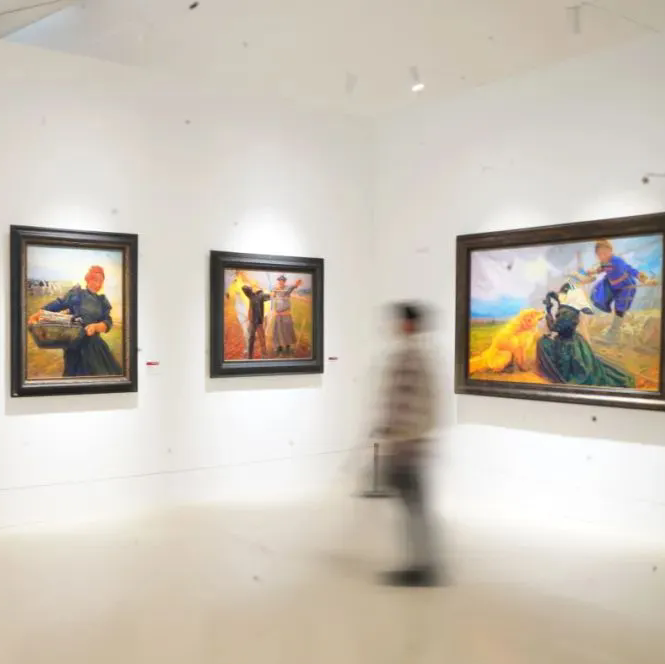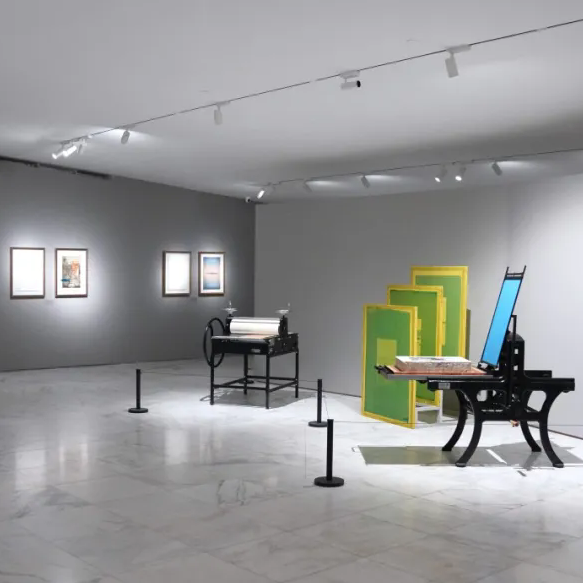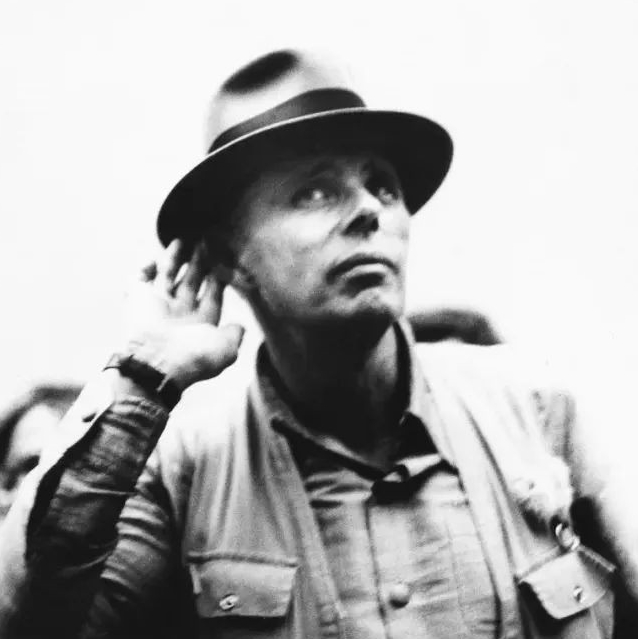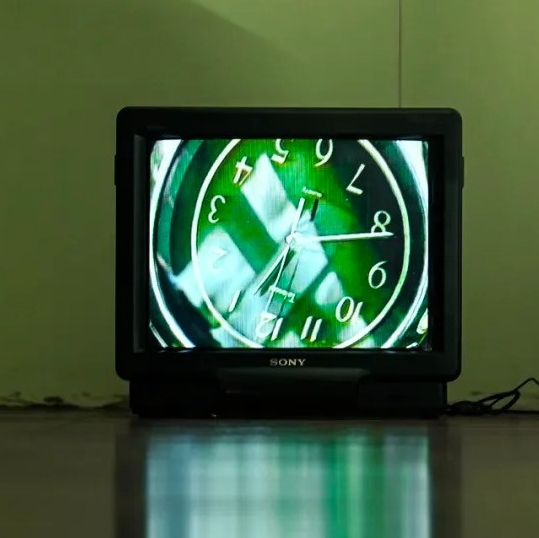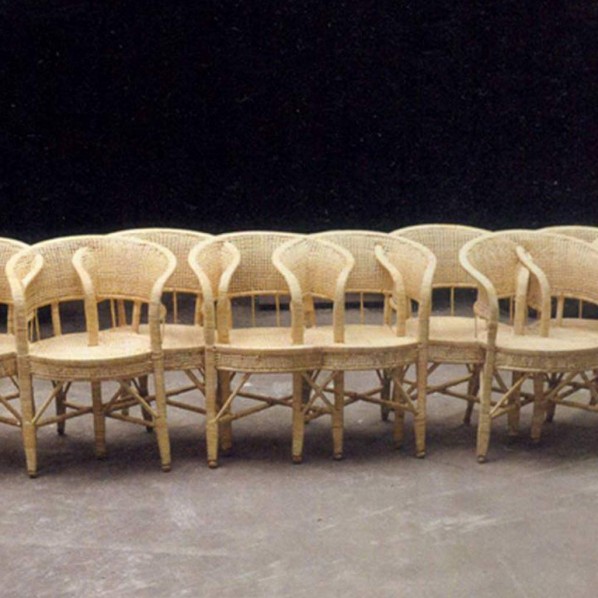
A Cane Chair by Zhang Xiang Installation 2010
On 9 April 2011, Harmonious Differences – Second Experimental Art Exhibition was launched at the Art Museum and the underground educational gallery of the Central Academy of Fine Arts. As an integral part of the China Experimental Art Institutional Education Symposium, this exhibition running from 9 April to 2 May, demonstrates China’s fine art institutes’ outstanding achievements in experimental art teaching, research and creative work together with representatives from nearly 20 different art institutions. The curator of CAFA Wang Huangsheng was in charge of the opening ceremony.
Pan Gongkai, president of CAFA interpreted how recent developments in Chinese experimental art relate to art from around the world. In his view, experimental art usually exists in the form of individual creation and it’s inevitable that experimental art is characterized as being a small scale and slow development within the structure of art institutions. Installation art in the West grew out of institutes while the academy itself acts as an arena for learning so that experiences can mature and art theories be understood. Current achievements, experiences and everyday issues are open for debate. Mr. Pan confirmed the significance of this exhibition as well as the coming symposium which he believed would inspire the future development in China’s experimental art.
Xu Bing, vice president of the Central Academy of Fine Arts mentioned in his speech that the academic purpose of CAFA is “not to refuse any profitable academic nourishment”. He stated that the strength of Western art has contributed to the promotion of culture. Chinese artists learn from the humble foundation of its people but the people of the West have really little understanding of China’s problems. The accelerating development of China has enabled people to realize that they need in-depth knowledge of Chinese culture to develop a real empathy with China. Within Western art circles, this exhibition and symposium would offer an opportunity to further understand China. We should recognize that contemporary art has a place within the international environment and CAFA can play an important role in maintaining, reserving and developing a hereditary art basis as part of the ecological relationship of art in China as a whole.
Lv Shengzhong, the Dean of the Experimental Art School, Sculpture Department at CAFA, agreed with Mr. Xu. He pointed out that for many years we’ve addressed ourselves under the perimeters of westernization, however, westerners have in fact learned from the Orient or African continents without a real immersion in oriental or African culture. Mr. Xu said, “There is going to be a termination of westernization as we will find out possibilities in our current cultural situations. As well as getting rid of westernization, we will get out of it and construct our own culture which urges me to engage in the experimental art education. The relationship between the academies and society used to be taken as mutually exclusive, even academic experimental art was considered as a rhetorical contradiction. Although it’s quite different from the original establishment, a long-term relevance has been established between academies and society. Colleges are not a place for the cultivation of conservative artists but for the construction of a bridge between colleges and society through the initiative of the establishment specializing in experimental art. In addition, there is a common curriculum among colleges to organize visits to rural areas to form sketches from nature. This change in concentration connects colleges and society. Mr. Lv has made his detailed introduction on the preparatory work of this exhibition and the symposium. Curator Wang Huangsheng formulated the main characteristics and relevant discussions of this exhibition and affirmed the significance of this exhibition for China’s experimental art education and its influences on China’s art circles.
The Second Experimental Art Exhibition focuses on the outstanding achievements gained by the teaching from the university, research and creative work over the past decade which are manifestly represented by contemporary Chinese art education which has developed into more permissible academic thinking in adherence to original plans with a traditional foundation. It’s reported that the China Experimental Art Institutional Education Symposium is going to take place at CAFA from 28 April 28 to 1 May 2011.

Knitting Toilet Paper by Wang Lei 2010
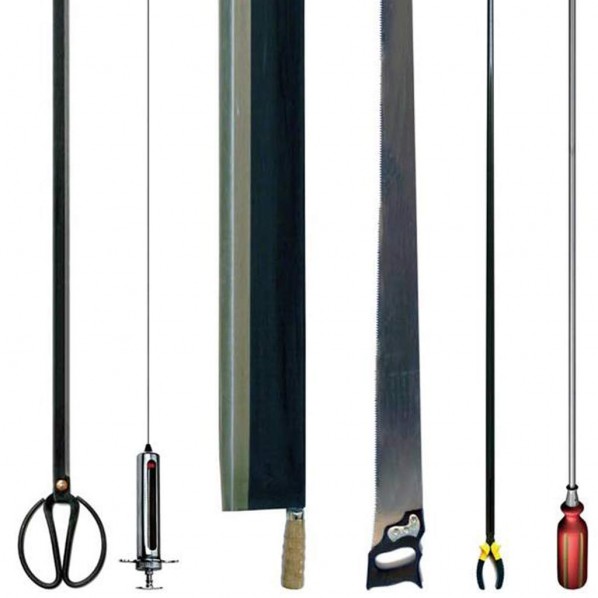
Effective Extension by Chen Mingqiang Installation 2008
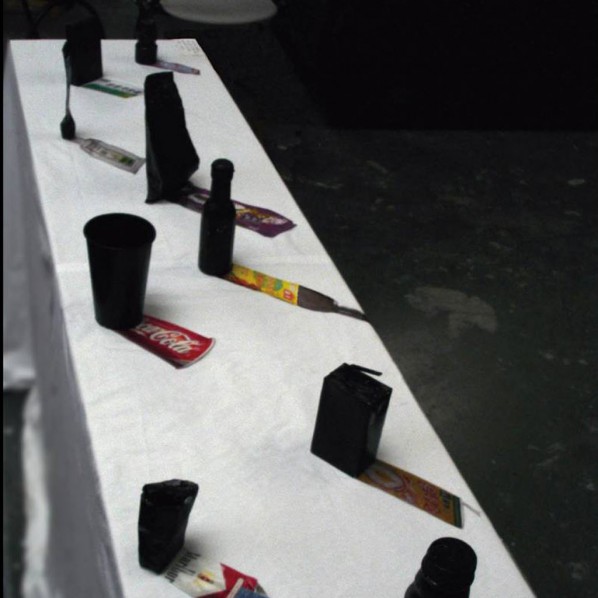
Shadow by Zhong Jialing Installation 2006


